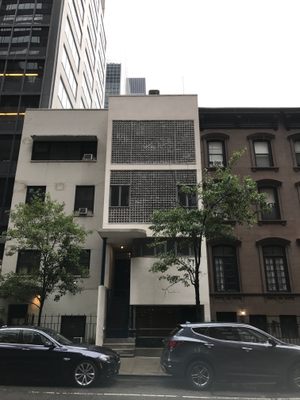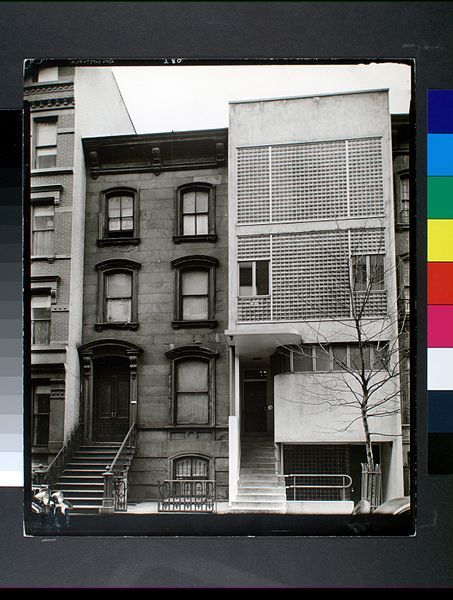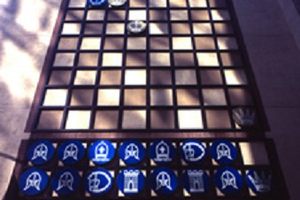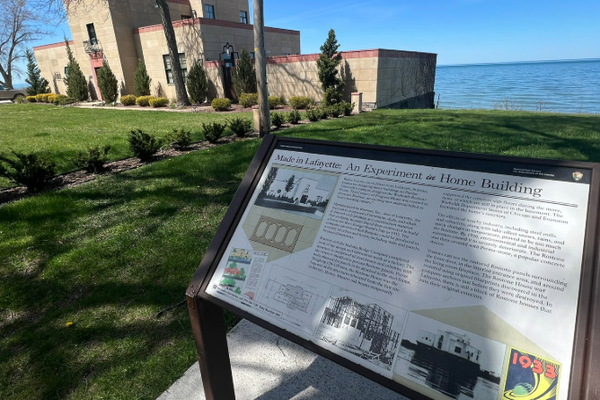About
In 1930s New York City, William Lescaze used the design for his own Modernist house, the first in the city, to demonstrate his ideas about function over style. In the process, he created a new architectural fashion in America.
One of the pioneers of American Modernism, Lescaze believed the design of a house could influence the health and happiness of the resident, and that houses had to meet the needs of the people they were built for.
In 1934, he took a pre-Civil War brownstone and overhauled it for his own purposes. He eliminated ornamentation with a flat, simple façade that had a curved, inset entryway.
His most significant innovation was his use of glass blocks for the façade and for skylights, having seen them used in Europe. The skylights, embedded in the concrete back patio, allowed natural light into his ground floor office.
The glass blocks that dominated the façade, alternating with gray stucco and ribbon windows, allowed tons of natural light into the simple, modern rooms of the residential floors without allowing passersby a clear, wide-open view of the residents’ private lives.
The glass block windows also obscured the view of the building across the street, which Lescaze did not want to have to look at, and were thick enough that they did not let much street noise in or increase the energy bill (his house was also the first residence in the city to have central air conditioning). It did not take long for the use of glass block windows to spread, since they solved so many problems of city life.
Related Tags
Community Contributors
Added By
Published
July 17, 2017
Sources
- http://www.nytimes.com/2013/01/13/realestate/streetscapes-the-ups-and-downs-of-a-modernist.html
- http://www.nytimes.com/1984/08/21/arts/architecture-a-william-lescaze-retrospective.html
- https://www.cooperhewitt.org/2013/03/11/william-lescazes-townhouse-blueprint-creating-a-new-look-for-new-york-residences/
- http://gothamist.com/2015/03/12/revisiting_the_first_modernist_hous.php
- https://www.6sqft.com/the-william-lescaze-house-nycs-first-modernist-residence/































